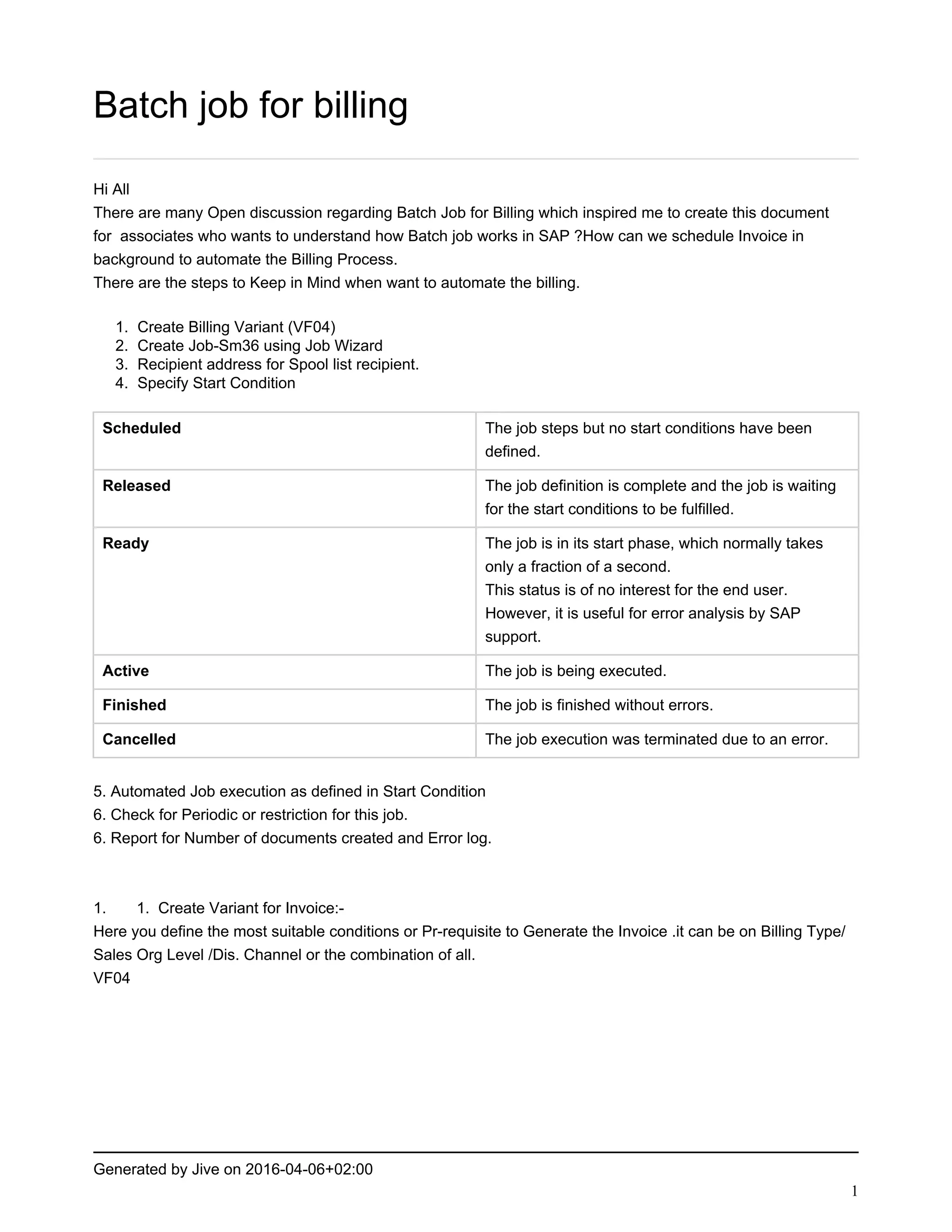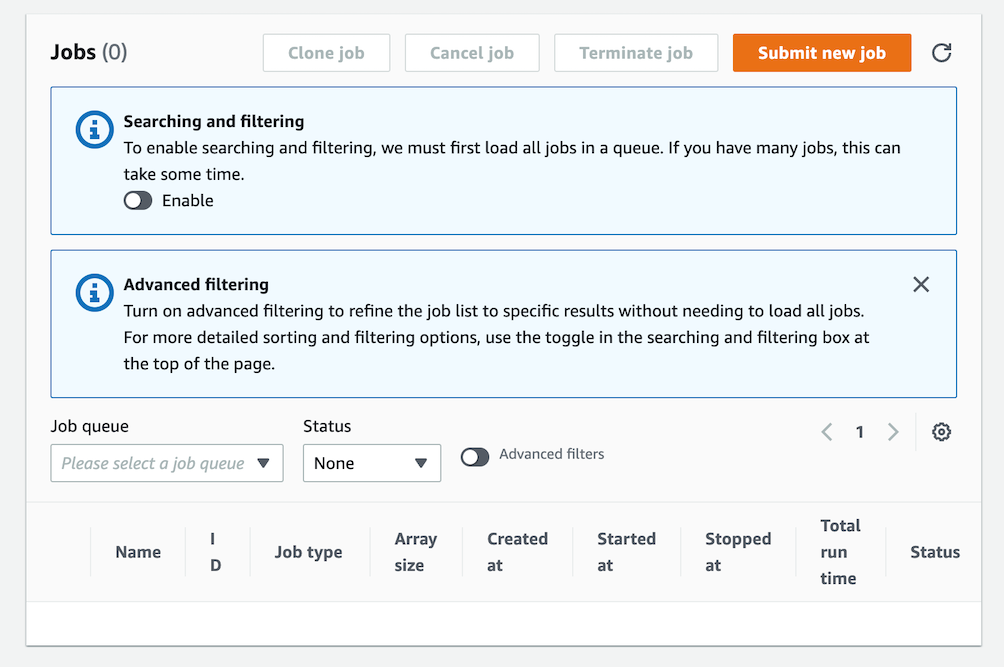RemoteIoT batch jobs are revolutionizing how industries handle data processing tasks. In today's fast-paced world, where real-time insights are crucial, understanding how to implement and optimize batch jobs is essential for businesses aiming to stay ahead. This guide dives deep into practical examples, offering actionable insights to help you harness the full potential of RemoteIoT.
Imagine this: You're managing thousands of IoT devices spread across various locations, each generating streams of data. How do you efficiently process and analyze this massive influx of information? That's where RemoteIoT batch jobs come into play. By automating repetitive tasks, these jobs streamline data management, reduce operational costs, and enhance productivity.
This article isn't just about theory; it's packed with practical examples, expert tips, and industry insights. Whether you're a developer looking to enhance your skills or a business leader aiming to leverage IoT technology, this guide is your go-to resource. Let's dive in and explore how RemoteIoT batch jobs can transform your operations.
Read also:Mikayla Campinos Unraveling The Enigmatic Purple Lights
Table of Contents
- What is RemoteIoT?
- Understanding Batch Jobs
- Benefits of RemoteIoT Batch Jobs
- RemoteIoT Batch Job Example Implementation
- Tools and Technologies for RemoteIoT
- Best Practices for RemoteIoT Batch Jobs
- Common Challenges and Solutions
- Industry Use Cases
- Future Trends in RemoteIoT Batch Jobs
- Conclusion and Next Steps
What is RemoteIoT?
RemoteIoT refers to the integration of Internet of Things (IoT) devices with remote processing capabilities. It's like having a virtual assistant that manages your IoT network, ensuring seamless data flow and efficient operations. RemoteIoT systems are designed to handle large-scale data processing, making them ideal for industries dealing with massive datasets.
Now, here's the kicker: RemoteIoT isn't just about connecting devices. It's about creating a smart ecosystem where every component works together seamlessly. By leveraging cloud computing, machine learning, and advanced analytics, RemoteIoT empowers businesses to make data-driven decisions that drive growth and innovation.
How RemoteIoT Works
Think of RemoteIoT as a bridge connecting your physical devices to the digital world. Here's how it works:
- Data Collection: IoT devices gather information from their environment.
- Data Transmission: The collected data is sent to a central server or cloud platform.
- Data Processing: RemoteIoT batch jobs process the data to extract meaningful insights.
- Decision Making: Businesses use the insights to optimize operations and improve efficiency.
Understanding Batch Jobs
Batch jobs are like the unsung heroes of data processing. They quietly handle large volumes of data in the background, ensuring everything runs smoothly. A batch job is a set of instructions executed as a single unit, often scheduled to run at specific times or intervals.
In the context of RemoteIoT, batch jobs are crucial for managing data from multiple IoT devices. They allow you to process data in bulk, reducing the need for manual intervention and minimizing errors.
Key Features of Batch Jobs
Here are some key features that make batch jobs indispensable:
Read also:Is Damon Darlington Rich Uncovering The Truth Behind His Wealth
- Automation: Batch jobs automate repetitive tasks, saving time and resources.
- Scalability: They can handle large datasets, making them ideal for enterprise-level operations.
- Flexibility: Batch jobs can be customized to meet specific business needs.
- Reliability: Once set up, batch jobs run consistently, ensuring data integrity and accuracy.
Benefits of RemoteIoT Batch Jobs
The advantages of implementing RemoteIoT batch jobs are numerous. From cost savings to enhanced productivity, here's why businesses are embracing this technology:
Cost Efficiency
By automating data processing tasks, RemoteIoT batch jobs reduce the need for human intervention, leading to significant cost savings. Businesses can allocate resources to more strategic activities, driving growth and innovation.
Improved Data Management
RemoteIoT batch jobs ensure that data is processed efficiently and accurately. This leads to better decision-making and improved business outcomes. With the ability to handle large datasets, businesses can gain deeper insights into their operations.
Enhanced Security
Data security is a top priority for businesses. RemoteIoT batch jobs incorporate robust security measures to protect sensitive information. By encrypting data and implementing access controls, businesses can safeguard their data against unauthorized access.
RemoteIoT Batch Job Example Implementation
Let's take a look at a practical example of how RemoteIoT batch jobs can be implemented. Imagine a manufacturing plant with hundreds of IoT sensors monitoring equipment performance. Each sensor generates data that needs to be processed and analyzed to ensure optimal operations.
Step-by-Step Guide
Here's how you can set up a RemoteIoT batch job:
- Identify the data sources: Determine which IoT devices will provide data for the batch job.
- Set up the infrastructure: Configure the cloud platform or server where the batch job will run.
- Write the batch job script: Use programming languages like Python or Java to create the batch job script.
- Schedule the job: Use a scheduling tool to define when the batch job will run.
- Monitor and optimize: Continuously monitor the batch job's performance and make adjustments as needed.
Tools and Technologies for RemoteIoT
Implementing RemoteIoT batch jobs requires the right tools and technologies. Here are some popular options:
Cloud Platforms
Cloud platforms like AWS, Microsoft Azure, and Google Cloud offer robust solutions for RemoteIoT batch jobs. They provide scalable infrastructure, advanced analytics tools, and secure data storage.
Programming Languages
Languages such as Python, Java, and C++ are commonly used for writing batch job scripts. Their versatility and extensive libraries make them ideal for handling complex data processing tasks.
Monitoring Tools
Tools like Splunk and Prometheus help businesses monitor the performance of their RemoteIoT batch jobs. They provide real-time insights and alerts, ensuring smooth operations.
Best Practices for RemoteIoT Batch Jobs
To get the most out of your RemoteIoT batch jobs, follow these best practices:
Optimize Resource Allocation
Ensure that your batch jobs are optimized for resource usage. This includes allocating the right amount of CPU, memory, and storage to each job.
Implement Error Handling
Errors are inevitable, but with proper error handling, you can minimize their impact. Use try-catch blocks and logging mechanisms to identify and resolve issues quickly.
Regularly Update and Test
Technology evolves rapidly, and so should your batch jobs. Regularly update your scripts and test them thoroughly to ensure they continue to meet your business needs.
Common Challenges and Solutions
While RemoteIoT batch jobs offer numerous benefits, they also come with challenges. Here are some common issues and how to address them:
Data Overload
Handling large volumes of data can be overwhelming. To tackle this, use data compression techniques and implement efficient data storage solutions.
Security Concerns
With the rise in cyber threats, ensuring data security is crucial. Use encryption, firewalls, and multi-factor authentication to protect your data.
Industry Use Cases
RemoteIoT batch jobs are being used across various industries to drive innovation and efficiency. Here are some examples:
Healthcare
Hospitals use RemoteIoT batch jobs to process patient data, enabling doctors to make informed decisions quickly. This leads to improved patient care and better health outcomes.
Manufacturing
Manufacturers leverage RemoteIoT batch jobs to monitor equipment performance and predict maintenance needs. This reduces downtime and increases productivity.
Future Trends in RemoteIoT Batch Jobs
The future of RemoteIoT batch jobs looks promising, with several trends shaping the landscape:
Edge Computing
Edge computing is gaining traction, allowing data processing to occur closer to the source. This reduces latency and enhances real-time decision-making.
Artificial Intelligence
AI-powered batch jobs are becoming more prevalent, enabling businesses to automate complex tasks and gain deeper insights from their data.
Conclusion and Next Steps
In conclusion, RemoteIoT batch jobs are transforming how businesses handle data processing tasks. By automating repetitive tasks, optimizing resource allocation, and enhancing security, these jobs offer significant benefits. To get started, identify your data sources, set up the infrastructure, and write your batch job script.
Don't forget to share your thoughts and experiences in the comments below. Your feedback helps us improve and create more valuable content. And if you found this article helpful, consider sharing it with your network. Together, let's unlock the full potential of RemoteIoT batch jobs!


